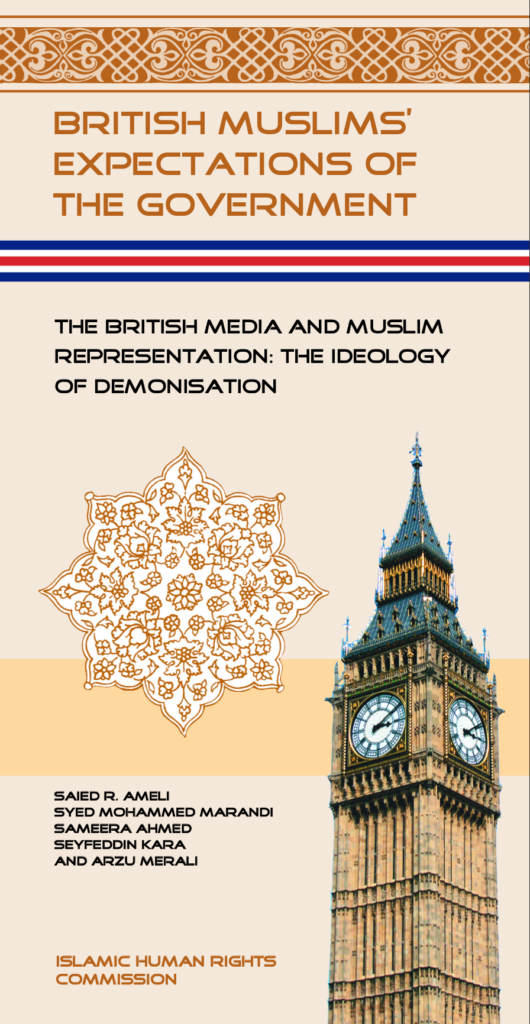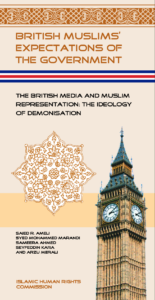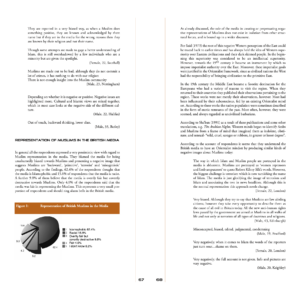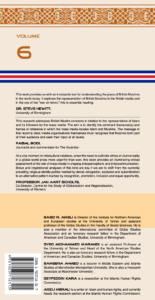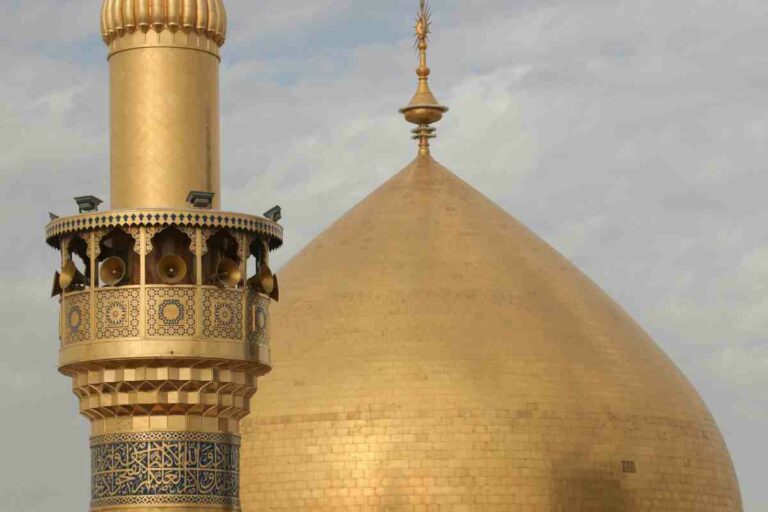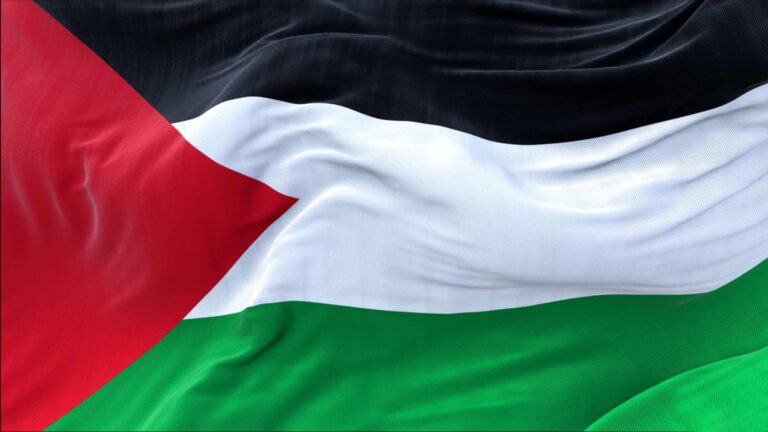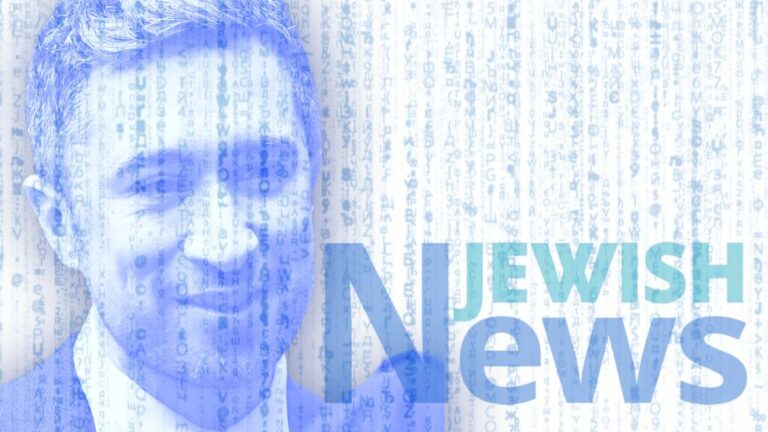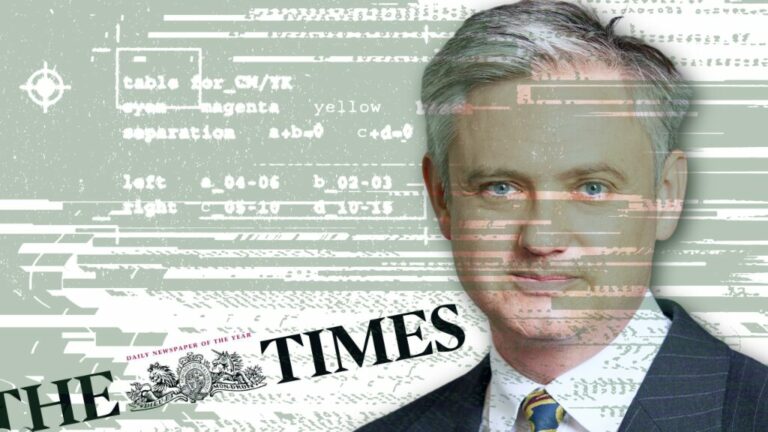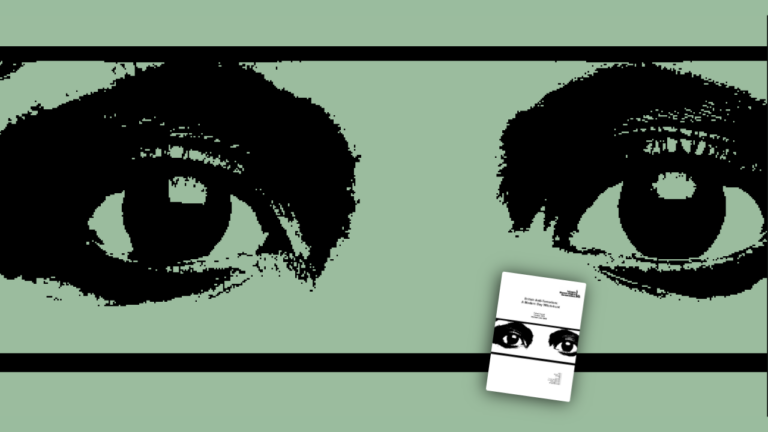The sixth volume in the landmark British Muslims’ Expectations of the Government series is ‘The British Media and Muslim Representation: The Ideology of Demonisation’ by Saied R. Ameli, Syed Mohammed Marandi, Sameera Ahmed, Seyfeddin Kara and Arzu Merali. Published January 2007.
From the Foreword:
As this war was fought, a battle over terminology was and is being ferociously waged on a daily basis, with British political language at odds with the representations on the screen: the government talks about Hizbullah aggression while TV screens show Israeli war crimes; the government talks about ending external interference in Lebanon and Gaza from Iran and Syria, and news bulletins show an Israeli onslaught on both besieged nations. A war between civil society and pro-Israeli elements rages in the press, and the government has fallen into line with a societal reading of Islam and Muslims, wherever they are, as aggressive and aggressors, despite overwhelming evidence to the contrary such as in Lebanon and Gaza. The view is of Muslims as incorrigibly savage and beyond negotiations. Peace will come on Israeli, US and British terms, not those dictated by Muslims, or indeed, international law.
This polarisation of representations highlights the core of this volume’s aim – to dissect how cultural and social policy is informed by media representation of Muslims – which as current events have shown is not always intentionally inimical – but which nevertheless has a huge part to play in shaping negative perception of Muslims and creating negative experiences for Muslims at individual and collective levels.
To buy a copy on-line shop here.
To download a free PDF click here.
A summary of the report follows, some links to reviews and media coverage follow the images. To find out more about the full BMEG project click here.
Summary
‘The British Media and Muslim Representation: The Ideology of Demonisation’. A report by Saied R. Ameli, Syed Mohammed Marandi, Sameera Ahmed, Seyfeddin Kara and Arzu Merali for the Islamic Human Rights Commission.
Publication date: 26th January 2007, ISBN 978-1-903718-31-5 (ISBN-10: 1-903718-31-7), pp 117
Background
The sixth report in the British Muslims’ Expectations of Government series explores the relationship between perceptions by and of Muslims and the role of domination and demonisation in the cultural language of the media.
Questions asked in this study are: How has the Western media generally covered Islam and Muslims? What are the concerns about media reporting and why does representation matter? What action do Muslims expect the government to take to remedy any unfairness?
By analysing responses from a nationwide survey of 1125 Muslims, and answers from 57 qualitative questionnaires and analyses of television news, films and English literature this report seeks to answer some of these questions and to understand how media can influence public understanding and viewpoints.
Background Studies
A review of existing theories of anlaysis was undertaken including basic theories and concepts of representation; representation theories including the (i) reflective approach, (ii( intentional approach (iii) constructionist approach. According o these media representation is strongly linked to actual reality, structures of power that inform not only cultural considerations but can and do affect concrete power structures and power relations between societal actors with regards to power relations between majorities and minorities. More specific attention was given to the idea of ideological representation as the basis through which those represented are rendered powerless and through which domination of the majority is enforced not only in the media but across society. Such representation includes discourses of: ethnocentrism; domination and; demonisation.
• Muslim Perception of the media
Corroborated by a variety of studies, there is a dominant perception amongst Muslims that the media does indeed portray them and their religion in an inaccurate and derogatory manner.
Effectively then, what the public understand about Muslims in general and British Muslims in particular is understood to deeply related to ‘British Muslim representation’ not only in the media but also in the whole social systems of the West. Representation is not only about perception, the position of the reader and audience is very critical.
That is why non-British Muslims and British Muslims do not have a similar understanding of Muslim representation in the media (Hill, 1981,
Fregoso, 1993 and Hall, 1997).
Research Findings
Part One: TV News, Film and Literature
These analyses from the outset sought to recognize the many examples of good practice in the media, in particular TV and print media attempts at key times to educate audiences about Islam and Muslims. However the overall analysis highlighted institutionalized prejudice that was so embedded that anti-Muslim prejudice did not need to be maliciously motivated or intentional as it was structural.
• TV News Analysis
A two-week content analysis of four mainstream news programmes of BBC News, Newsnight, ITV News and Channel 4 News were undertaken prior and subsequent to the events of 7 July 2005. The language of news media was particularly focused on throughout the analyses. The frequency of selected words was tabulated and presents comparisons between the various news programmes. Examples include:
o Asylum and Immigration
As one of the dominant themes during the 7/7 and post 7/7 coverage, debates around asylum and immigration were constantly referred, yet most suspected bombers were of British Origin leading to the reinforcement of the view of ‘others’ and Muslims as one.
o Loyalty and belonging
Media depicted the 7/7 suspects as well integrated (normal upbringing, education, job etc.) upon their (re)discovery of Islam, they were led away from normaility into something extreme and sinister. Therefore implying that Muslims in general have a potential to develop such extreme views and behaviour regardless of their being integrated in society or their political stance.
The findings showed that despite often ‘good intentions’ in addressing anti-Muslim issues, the TV News analysed showed a limited framework within which Muslims and Islam were discussed.
• Muslim Representation in Cinema
For this analysis, a range of film genres were examined, including action thrillers (The Siege: 1998, Executive Decision: 1996), drama (House of Sand and Fog: 2003, East is East: 1999) and children’s cartoons (Aladdin: 1992), for their representation of Islam, Muslims and Arabs. It was evident from all genres that they contained negative stereotypes about Islam and Muslims/ Arabs. The thrust of these differed as did the actual manifestation, nevertheless, they all exhibited examples of Islamophobic discourses, including dual discourses of racism and Islamophobia, where the ethnicity of the character was understood to be irreducibly Muslim .
• Representation in English Literature
Both fiction and non-fiction biography were looked at in this section with titles including Jane Eyre, Bridget Jones’ Diary, Princess and Reading Lolita in Tehran examined. Recurring stereotypes, as well as the reduction of Muslim experiences of trauma and genocide to comic asides were examined within an Orientalist tradition in English literature.
Such discursive strategies are not simply autonomous or independent acts of cultural production. They occur within particular political and social contexts and, in turn, they reinforce and sometimes help shape those contexts. The material examined fits in well with patterns
existing within the more global and explicitly political Orientalist discourse.
Part Two: British Muslims’ understanding of Muslim representation in the media
• Geographical location and perception of media
Significantly high percentage of respondents felt media to be Islamophobic in city areas: Manchester (73.0%), Peterborough (70.4%) London (65.5%) and Bradford (62.1%)
• Age groups and perception of media
The 25-29 (71.6%) and 35-39 (71.1%) age groups almost returned the same figures in terms of perceiving the media as being Islamophobic and held the highest negative views respectively.
In contrast, the 15-19 age group stands out for finding the media the least Islamophobic (42.7%) among all age groups. However, their response concentrated on racism, with respondents in this age group having the highest figure (25.9%) for considering the media racist.
• Gender and perception of media
Female respondents (63.3%) slightly exceeded the male respondents (61.9%) in their consideration of the media as Islamophobic and covertly destructive (female 11.7% and male 8.7%). It should be mentioned here that practising Muslim women have greatly suffered from media stereotyping as suggested in volume four in this series.
• Birthplace and perception of media
63.4% of British Muslim citizens felt the media portrayal to be Islamophobic. A further 15.5% felt media to be racist and 9.4% thought it as covertly destructive.
9.9% of non-British Muslim citizens felt media portrayal to be Islamophobic. A further 15.5% felt media to be racist and 13.2% thought it as covertly destructive.
• Level of Religiosity and Perception of Media
70.1% of practising Muslims found the media to be Islamophobic.
61.1% of highly practising Muslims found the
media to be Islamophobic.
40% of those who did not care for Islamic values found the media to be fair yet a further 40% of them found the media to be Islamophobic.
• Education and the perception of media
In terms of education and perception of media, the research showed that the highest levels of dissatisfaction with the Islamophobic attitude of the media occurred in people with postgraduate level education (68.4%). Undergraduate (66.1%) and PhD (65.5%) level education levels, followed closely behind.
• Representation of Muslims in the British media
Some respondents feel that British media to has an Orientalist mindset by producing negative images about Muslims today.
• Portrayal of British Muslims and non-British Muslims
According to the respondents’ accounts the media employ the same demeaning views in reporting issues that describe Muslims in Britain and Muslim in other countries. However, a few of the respondents think that media is more ruthless in portraying the Muslims who live in Muslim countries since they are not able to raise their voice.
• Islamophobia in Hollywood and British movies
The accounts of the respondents indicates that the negative portrayal of Muslims is heavily presented in the films that are produced in both the UK and US. Films portray Muslimsmostly as as terrorists who randomly kill people (usually innocents) or blow things up (including themselves), hijackers, misogynistic or stupid
Some respondents believe that the film industry is used as a tool in the foreign policy by the Western countries in terms of demonizing and gaining public support against a fashioned enemy. An illustration of this: USSR was at the brunt of demonisation during the Cold War era. .
• Different representations in the different forms of Media
Auditory media is seen as less harmful by some respondents than visual media since using images in the wrong context could be far more manipulative. Some have even suggested television is better since the audience is able to examine the given evidence with its own eyes
Others felt that the Internet is the most reliable source of information because of its wider range of choices. Yet, by some, it is accused as being the chief perpetrator of Islamophobia in the media.
Regardless of the varying forms of media, a general consensus amongst the respondents is that the media present the same negative image of Muslims. The unreliability of mainstream media has led to some respondents using alternative media sources, both Muslim and non-Muslim media alike.
• Complaints and responses
Another interesting finding of the interviews is that most of those who are distressed with the negative portrayal of Muslims in the media showed no interest in complaining about them. When they are asked why their answers highlight their alienation from society. However, hopefully, some respondents were encouraged by the the IHRC interviews and said that they would take part in campaigning in the future. The accounts of those who did complain about the negative portrayals support the pessimism of those who have never made any complaint. Almost all of them failed to get a response.
• Ideological Representation: Encoded messages about Muslims
According to respondents, Islam is the fastest growing religion in the world and this fact is worrying the capitalist West since this would diminish Western hegemony. Yet, some held the idea that the reason was fear fuelled by ignorance. Since the Western public is ignorant of Islam, it is afraid of it.
• Phobic representation of Muslims: Intercultural Consequences
Many respondents felt the media portrayal of Muslims is psychologically scarring on Muslims who who face constant Islamophobic elements in their daily life i.e. verbal and physical assault, humiliation, discrimination.
Some respondents even went as far as feeling that Muslim youth suffered most from Islamophobic propaganda in the media.
• Impacts on the Non-Muslims
Respondents believe anti-Islamic sentiments flourish as a result of negative representation in the media and causes profound polarization and conflict in British society.
• Responsibility of Media towards Islamophobia
All respondents unanimously pointed to media as being the chief instrument of Islamophobia and expressed their discontent regarding the role of the media in inter-faith and inter-community relations. They initially acknowledged the leading role of the media in inter-faith and inter-community relations; however, they came to the conclusion that media somehow abuses this role and widens already existing divisions.
In coverage of issues concerning Muslims some words i.e. terrorism, bombing, hijacking, extremism, are deliberately inserted which manipulate the public to believe that all Muslims are related to or are supporters of these activities
• Does the media give enough opportunity to Muslims?
Many respondents believe that the media did not give enough opportunity to Muslims to represent themselves and also felt that the Muslim figures who appear in the media are the ones who held extremist views or are marginalized Muslims who do not represent the Muslim community at all.
• Muslim expectations from the media and the government
The report concludes with proposals for the government, policy makers and media alike to consider as a direct result of demonisation of Islam and Muslims in the media.
• Expectations of the media
*Just and reliable representation of Muslims and Islam – the media must be fair and objective towards Muslims. There is a need for reliable reporters who are well versed with the Islamic belief system and cultures or Muslim reporters who can understand their subjects
*A balanced approach – the media should be balanced in its approach and try to understand what is going on in the minds of the Muslim population and convey it as it is.
*Coverage regarding other aspects of Islam – instead of bringing up political issues, other aspects of Islam should be covered by the media i.e. art, culture, science and civilization
*Giving more opportunities to Muslims in the media – Muslim should be given more opportunities in the media so they could represent themselves better.
• Expectations of the Government
Legal Protection – The government should take steps to protect Muslims from biased coverage and prosecuting those inciting hatred against Islam by the form of a legislation.
Recommendations
• Tackling Institutional Islamophobia
o Monitoring representation of Muslims Both government and media institutions need to make studies and assess how Muslims and minorities are alienated through media representation.
o Tackling overt vilification and demonisation of Muslims Ensuring more effective forms of recourse and redress
o Cultural Change in the Attitude of British Politicians Due to disparity of access to the media political comments cannot be countered and debated in a way that includes minority groups. As such the media becomes a destructive force and a blunt instrument to force minorities into certain positions.
• Dealing with problematic content
o Creating effective watchdogs This requires government to enact relevant legislation to create watchdogs “with teeth”.
o Creating Structures of Accountability for the Political Use of Media. Including provisions for accountability in the ministerial and parliamentary codes of conduct could be an effective way of dealing with the acts of politicians who misrepresent minorities in the media.
o Requiring balance Creating a regulatory system that understands and requires balance reporting.
o Taking action against worst offenders The relevance of non-discriminatory anti-discrimination as used by media producers in assessing the effect on some ethnic and religious communities is one that needs to be broadened to cover other ethnic and religious minorities.
o Accountability
° Understanding Muslim standpoint(s)
o Contextualising reporting of Islam
o Wide and effective consultation with the Muslim communities
Methodology and Sample Group
In compiling this report, 1125 quantitative and 57 qualitative surveys were conducted, documented, analysed, and here presented for the aspired benefit of interested officials and community members alike. The quantitative questionnaire was part of a major survey carried out by IHRC and reported in volumes 1-4 of the British Muslims’ Expectations of the Government series.
In summary:
•The survey was undertaken across England, Wales and Scotland.
•The qualitative surveys were undertaken across England, Wales and Scotland.
•The diversity of Muslim ethnicities was represented across the survey.
•Respondents’ ages reflected the predominantly youthful make-up of the British Muslim community.
•Approximately 90 percent of our respondents are British citizens and 55 percent are born in Britain.
•The majority of respondents saw themselves as practising Muslims
Contact: info@ihrc.org, (+44)20 8904 4222
Media coverage
From Aladdin to Lost Ark, Muslims get angry at ‘bad guy’ film images [External link] The Guardian

